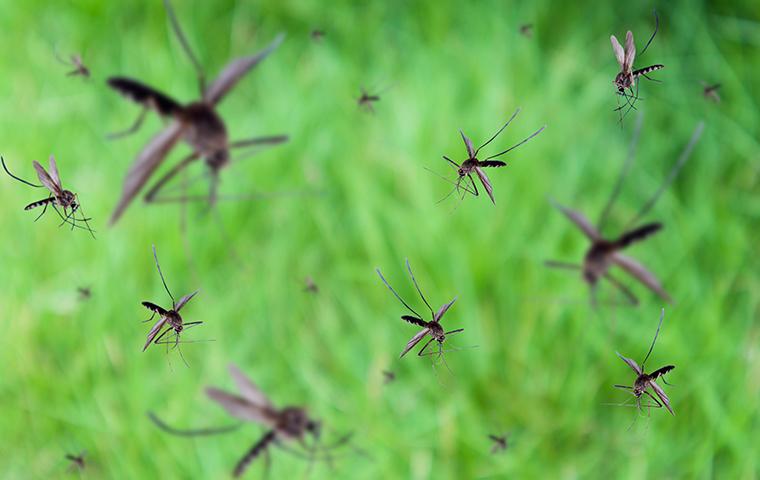
Mosquitoes are more than just a nuisance; they are vectors for various diseases, including West Nile Virus, Zika Virus, and malaria. When experts predict a “bad” year for mosquitoes, it means the conditions are ripe for these pests to breed and thrive. Preparing for an influx of mosquitoes is essential to protect your health and enjoy outdoor activities without constant swatting and itching. Here’s a comprehensive guide on how to prepare for a particularly bad mosquito season.
Understanding Mosquito Breeding Habits
Ideal Breeding Conditions
Mosquitoes thrive in warm, humid environments, and they need standing water to lay their eggs. Understanding these conditions can help you target areas for mosquito control:
- Temperature: Mosquitoes become active at temperatures above 50°F (10°C) and thrive in temperatures between 70°F (21°C) and 80°F (27°C). Warmer weather accelerates their life cycle, leading to more rapid population growth.
- Humidity: High humidity levels create ideal conditions for mosquitoes to survive and reproduce. This is why mosquito populations often explode after rainstorms or in humid climates.
- Standing Water: Any source of standing water can serve as a breeding ground for mosquitoes. This includes obvious sources like puddles, ponds, and birdbaths, but also less obvious places like clogged gutters, plant saucers, and even outdoor toys and equipment.
Understanding these breeding habits is crucial for effectively targeting and eliminating mosquito breeding sites on your property.
Eliminate Breeding Sites
Inspect and Remove Standing Water
Regularly inspect your property for potential mosquito breeding sites and remove standing water. This proactive approach is one of the most effective ways to control mosquito populations:
- Gutters: Clean out leaves and debris from gutters to prevent water from collecting. Gutters are often overlooked, but they can hold enough water to support mosquito breeding.
- Birdbaths and Pet Bowls: Change the water in birdbaths and pet bowls regularly, at least once a week, to prevent mosquitoes from laying eggs.
- Plant Saucers: Empty water that collects in plant saucers and other small containers around your yard. These small reservoirs can quickly become breeding sites.
- Ponds and Pools: Ensure ponds and pools are treated with appropriate mosquito control products or have proper filtration systems to keep the water moving.
- Containers: Store containers, buckets, and toys upside down or under cover to prevent water accumulation. Even a small amount of water can support a large number of mosquito larvae.
Improve Drainage
Ensure proper drainage in your yard to avoid standing water. This may involve some landscaping or maintenance:
- Yard Maintenance: Fill in low-lying areas in your yard that can collect water. These depressions can turn into puddles after rain, creating ideal mosquito breeding grounds.
- Drains: Make sure all drains are clear and functioning properly. Blocked drains can lead to water buildup, which attracts mosquitoes.
Use Mosquito Control Products
Larvicides
Larvicides target mosquito larvae before they become adults. These products are effective in water sources that cannot be eliminated, providing a proactive approach to mosquito control:
- BTI (Bacillus thuringiensis israelensis): A naturally occurring bacterium that kills mosquito larvae without harming other wildlife. It is safe to use in birdbaths, ponds, and other water features.
- Methoprene: An insect growth regulator that prevents larvae from developing into adult mosquitoes. This product disrupts the growth cycle, effectively reducing the mosquito population.
Adulticides
Adulticides target adult mosquitoes, reducing their population and immediate threat:
- Foggers and Sprays: Apply insecticides to vegetation and other areas where adult mosquitoes rest. These products provide temporary relief by killing mosquitoes on contact.
- ULV (Ultra-Low Volume) Fogging: Consider professional ULV fogging services for larger areas. This method distributes insecticide in very fine droplets, allowing it to penetrate dense vegetation and cover large areas effectively.
Protect Yourself
Personal Protection
Using personal protective measures can help you avoid mosquito bites when outdoors:
- Repellents: Apply EPA-approved insect repellents containing DEET, picaridin, IR3535, or oil of lemon eucalyptus to exposed skin. These repellents are effective in deterring mosquitoes and other biting insects.
- Clothing: Wear long-sleeved shirts, long pants, socks, and shoes when outdoors. Light-colored clothing is less attractive to mosquitoes, and treating clothing with permethrin provides added protection.
- Peak Hours: Mosquitoes are most active during dawn and dusk. Limit outdoor activities during these times if possible, or take extra precautions when you need to be outside.
Mosquito Nets and Screens
Creating barriers to keep mosquitoes away from your living spaces is essential:
- Screens: Ensure windows and doors have tight-fitting screens without holes. This prevents mosquitoes from entering your home while allowing fresh air to circulate.
- Mosquito Nets: Use mosquito nets over beds and cribs, especially if you live in an area with a high mosquito population. Nets provide a physical barrier that protects you while you sleep.
Enhance Your Outdoor Space
Mosquito-Repelling Plants
Certain plants naturally repel mosquitoes due to their strong scents. Incorporate these into your garden and outdoor spaces:
- Citronella: Known for its strong mosquito-repelling properties. Citronella grass can be planted around patios and seating areas.
- Lavender: Its pleasant fragrance deters mosquitoes and adds beauty to your garden.
- Marigolds: Contain pyrethrum, a natural insect repellent. Plant marigolds around your garden and in flowerbeds.
- Basil: Effective against mosquito larvae and adults. Plant basil in pots around outdoor dining areas for added protection.
Outdoor Fans
Mosquitoes are weak fliers. Using outdoor fans can create air movement that makes it difficult for them to land and bite:
- Patio Fans: Install ceiling fans or use portable fans on patios and decks to keep the air circulating and deter mosquitoes.
Community Efforts
Neighborhood Cleanup
Collaborate with your neighbors to reduce mosquito breeding sites in your community. Collective efforts can have a significant impact on reducing local mosquito populations:
- Clean Up Events: Organize community clean-up events to eliminate standing water and litter. Removing trash and debris that can hold water helps reduce breeding sites.
- Education: Share information on mosquito control measures with your community. Educating others about the importance of eliminating standing water and using protective measures helps everyone stay safe.
Municipal Programs
Support and participate in local mosquito control programs. Many communities have initiatives to manage mosquito populations and prevent disease outbreaks:
- Larviciding and Adulticiding: Encourage local authorities to implement regular mosquito control measures. Community-wide treatments can significantly reduce mosquito populations.
- Public Health Campaigns: Stay informed about public health campaigns and alerts regarding mosquito activity and disease outbreaks. Participating in these programs can help protect you and your neighbors.
Staying Vigilant
Preparation is key to managing a bad year for mosquitoes. By understanding their breeding habits, eliminating standing water, using control products, protecting yourself, enhancing your outdoor space, and participating in community efforts, you can significantly reduce the impact of mosquitoes on your life. Consistent efforts and vigilance will help keep your environment safe and enjoyable, even during peak mosquito season.

